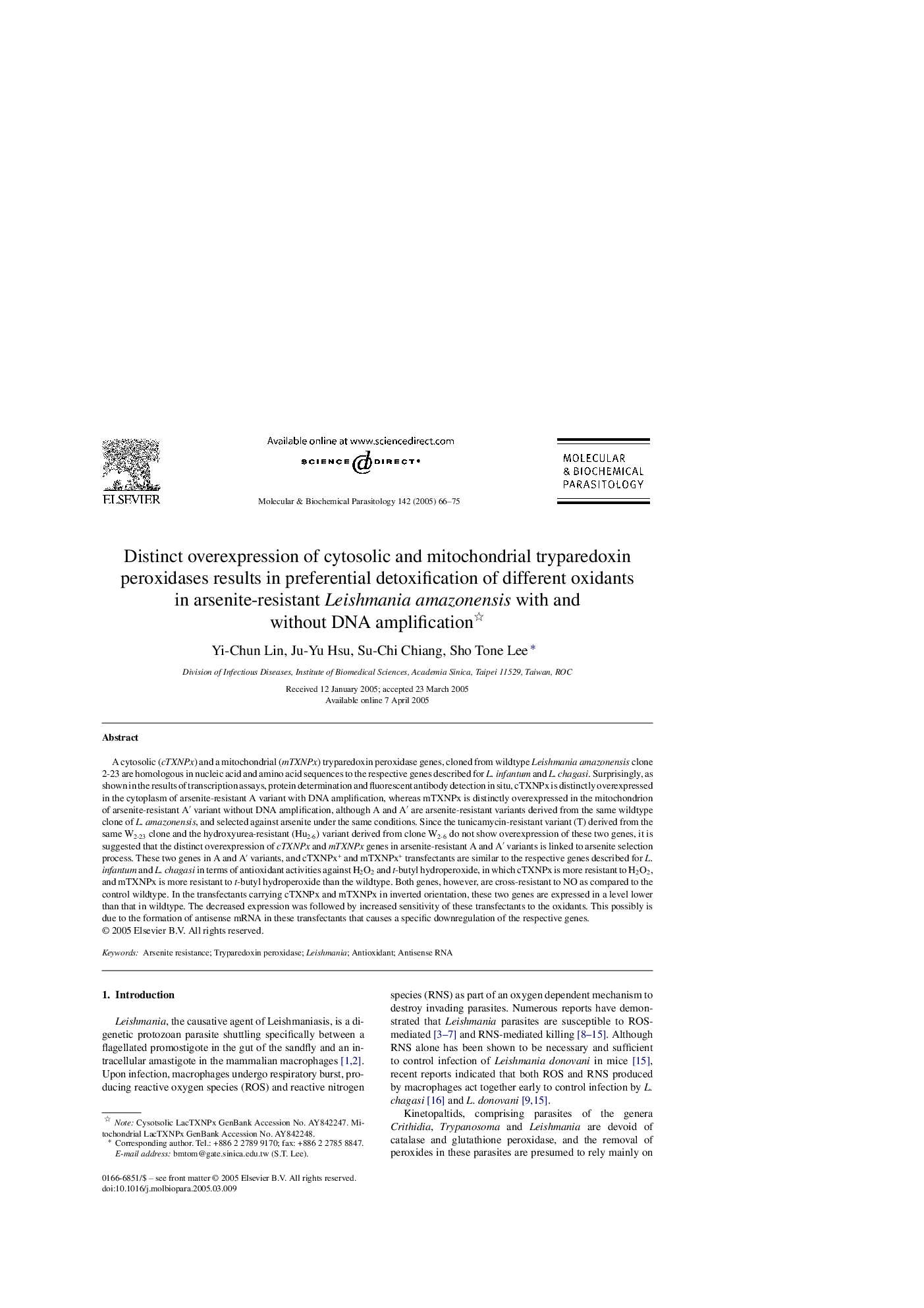| Article ID | Journal | Published Year | Pages | File Type |
|---|---|---|---|---|
| 9140022 | Molecular and Biochemical Parasitology | 2005 | 10 Pages |
Abstract
A cytosolic (cTXNPx) and a mitochondrial (mTXNPx) tryparedoxin peroxidase genes, cloned from wildtype Leishmania amazonensis clone 2-23 are homologous in nucleic acid and amino acid sequences to the respective genes described for L. infantum and L. chagasi. Surprisingly, as shown in the results of transcription assays, protein determination and fluorescent antibody detection in situ, cTXNPx is distinctly overexpressed in the cytoplasm of arsenite-resistant A variant with DNA amplification, whereas mTXNPx is distinctly overexpressed in the mitochondrion of arsenite-resistant Aâ² variant without DNA amplification, although A and Aâ² are arsenite-resistant variants derived from the same wildtype clone of L. amazonensis, and selected against arsenite under the same conditions. Since the tunicamycin-resistant variant (T) derived from the same W2-23 clone and the hydroxyurea-resistant (Hu2-6) variant derived from clone W2-6 do not show overexpression of these two genes, it is suggested that the distinct overexpression of cTXNPx and mTXNPx genes in arsenite-resistant A and Aâ² variants is linked to arsenite selection process. These two genes in A and Aâ² variants, and cTXNPx+ and mTXNPx+ transfectants are similar to the respective genes described for L. infantum and L. chagasi in terms of antioxidant activities against H2O2 and t-butyl hydroperoxide, in which cTXNPx is more resistant to H2O2, and mTXNPx is more resistant to t-butyl hydroperoxide than the wildtype. Both genes, however, are cross-resistant to NO as compared to the control wildtype. In the transfectants carrying cTXNPx and mTXNPx in inverted orientation, these two genes are expressed in a level lower than that in wildtype. The decreased expression was followed by increased sensitivity of these transfectants to the oxidants. This possibly is due to the formation of antisense mRNA in these transfectants that causes a specific downregulation of the respective genes.
Related Topics
Life Sciences
Biochemistry, Genetics and Molecular Biology
Molecular Biology
Authors
Yi-Chun Lin, Ju-Yu Hsu, Su-Chi Chiang, Sho Tone Lee,
